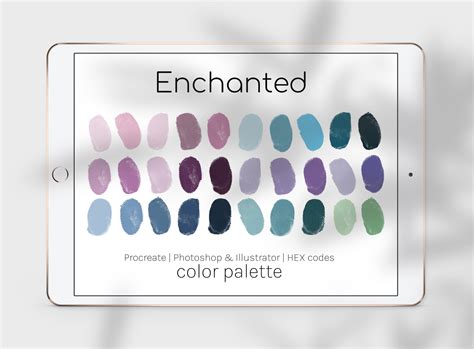Unraveling the Allure of Oil Slick Colors
Oil slick colors, a captivating array of ethereal hues, have captivated designers, artists, and homeowners alike. These iridescent shades, reminiscent of the mesmerizing patterns formed by oil on water, offer a unique blend of glamour and organic beauty.

Exploring the Science Behind Oil Slick Colors
The optical phenomenon that gives rise to oil slick colors is known as thin-film interference. When light waves interact with a thin layer of a transparent material, such as oil on water, they undergo partial reflection and partial transmission. The waves that are reflected and transmitted interfere with each other, resulting in constructive and destructive interference. Constructive interference leads to brighter colors, while destructive interference produces darker areas. The thickness and refractive index of the oil film determine the exact wavelengths that experience constructive and destructive interference, creating the characteristic rainbow-like patterns.
Color Spectrum of Oil Slick
Oil slick colors encompass a vast spectrum of hues, ranging from vibrant blues and greens to shimmering golds and coppers. This diversity is attributed to variations in the thickness of the oil film and the angle of observation. At thinner sections, the film exhibits a blue or green hue, while thicker areas appear gold or copper in color.
Applications in Various Industries
The allure of oil slick colors has permeated numerous industries, including:
- Fashion: Designers incorporate oil slick fabrics into clothing, accessories, and footwear, adding a touch of iridescence and sophistication.
- Interior Design: Homeowners use oil slick tiles, wallpaper, and furniture to create eye-catching focal points and add a touch of glamour to living spaces.
- Automotive: Automakers utilize oil slick paint finishes to enhance the aesthetic appeal of vehicles, giving them a sleek and futuristic appearance.
- Cosmetics: Makeup artists employ oil slick shades in eyeshadows, highlighters, and lip colors to create bold and multidimensional looks.
A New Word: “Iridescentia” for Inspiration
To capture the essence of oil slick colors, we introduce the term “iridescentia.” This neologism encapsulates the inherent play of colors and the organic beauty that is synonymous with these iridescent hues. Iridescentia inspires new applications and artistic expressions, fostering creativity and innovation.
Table 1: Oil Slick Colors in Fashion
| Brand | Item | Description |
|---|---|---|
| Gucci | Sequined Dress | Emerald green oil slick fabric with intricate sequins |
| Prada | Leather Tote | Navy blue oil slick leather with gold hardware |
| Miu Miu | Ballet Flats | Metallic gold oil slick leather with pointed toe |
Table 2: Oil Slick Colors in Interior Design
| Area | Element | Description |
|---|---|---|
| Living Room | Coffee Table | Copper oil slick mosaic tile top with geometric design |
| Kitchen | Backsplash | Green oil slick glass tiles with iridescent finish |
| Bathroom | Shower Wall | Blue oil slick porcelain tiles with a 3D effect |
Table 3: Oil Slick Colors in Automotive
| Manufacturer | Model | Paint Finish |
|---|---|---|
| Lamborghini | Aventador | Verde Mantis oil slick paint |
| Aston Martin | Vantage | Oligochrome oil slick paint |
| Lexus | LC 500 | Structural Blue oil slick paint |
Table 4: Oil Slick Colors in Cosmetics
| Brand | Product | Description |
|---|---|---|
| Huda Beauty | Emerald Obsessions Eyeshadow Palette | Shimmering green oil slick shades with multidimensional reflects |
| Fenty Beauty | Trophy Wife Highlighter | Golden oil slick highlighter with a holographic effect |
| Kylie Cosmetics | Velvet Trap Lipstick | Deep blue oil slick liquid lipstick with a matte finish |
Tips and Tricks for Using Oil Slick Colors
- Balance and Contrast: Use oil slick colors sparingly as they can be overpowering. Pair them with neutral tones or contrasting colors to create a harmonious effect.
- Highlight Natural Light: Position oil slick elements near windows or light sources to maximize their iridescent qualities.
- Experiment with Textures: Combine oil slick fabrics and surfaces with different textures to add depth and interest to your designs.
- Accessorize Wisely: Use oil slick accessories, such as jewelry or scarves, to complement your outfits without overwhelming them.
Common Mistakes to Avoid
- Overdoing It: Avoid using too much oil slick color, as it can quickly become overwhelming and garish.
- Lack of Contrast: Failing to pair oil slick colors with contrasting elements can result in a flat and monotonous look.
- Poor Lighting: Neglecting to consider the lighting conditions can diminish the impact of oil slick colors.
- Ignoring the Color Wheel: Mismatching oil slick colors with the wrong complementary or analogous colors can create a disjointed and unappealing effect.
Conclusion
Oil slick colors, with their captivating iridescence and organic beauty, have revolutionized the way we approach design and aesthetics. From fashion to interior design, cosmetics to automotive, these ethereal hues have added a touch of glamour and sophistication to our surroundings. By embracing the principles of iridescentia, experimenting with different applications, and avoiding common mistakes, we can harness the full potential of oil slick colors to create truly stunning and memorable designs.
